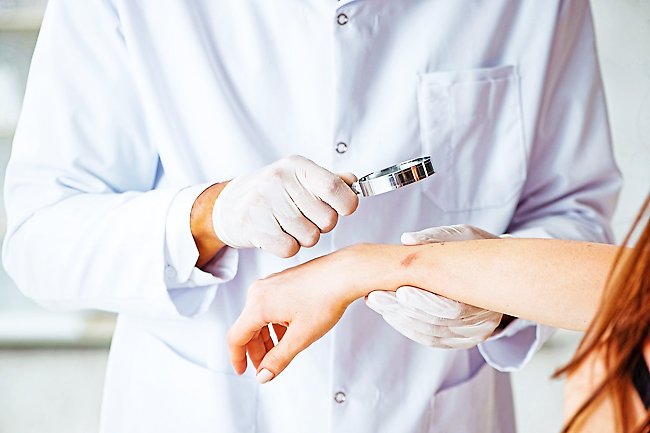
[ad_1]
Cynthia Weiss
THE STAR – Skin tags are common, and as in your situation, they can become even more common as people age.
It is not known what causes skin tags, but the good news is that they are not cancerous and do not pose other health concerns.
The technique for removing skin tags is simple and usually effective.
To avoid unnecessary health risks however, skin tag removal should be performed under the guidance of a physician.
Occasionally, an ophthalmologist may have to remove skin tags close to an eyelid.
It is not recommended that people attempt home remedies.

Skin tags – also called acrochordons, soft fibromas or fibroepithelial polyps – are small non-cancerous, or benign, skin growths.
Usually, they are flesh-coloured bumps of tissue connected to the skin’s surface by a narrow stalk.
The colour, texture, size and width of the base can vary.
It may be valuable to talk to a dermatologist about the growths to diagnose whether you have skin tags or another skin disorder that can mimic the appearance of a skin tag.
These include benign conditions such as moles, warts and seborrhoeic keratoses, as well as malignant skin cancers, including melanomas.
Also, in rare cases, the development of multiple skin tags may be a sign of an underlying hormonal or endocrine syndrome, such as polycystic ovary syndrome (PCOS) or acromegaly.
So medical evaluation is always recommended before treatment.
Friction can play a role in the development of skin tags.
Commonly, they are located where skin rubs against skin or clothing.
Frequently, they develop on the neck, underarms and eyelids, as well as within body folds, such as under the breasts or in the groin area.
In some cases, skin tags seem to be associated with obesity.
Genetic factors also appear to play a role.
Unfortunately, there’s no way to minimise the risk of developing skin tags.
Most skin tags don’t cause symptoms, unless they are repeatedly irritated by rubbing against jewellery, clothing or other items.
The tags are harmless, but they won’t go away without treatment.
Reasons for treatment include irritation of a skin tag or if you don’t like the way the skin tag looks.
In some cases, after removal, a specimen may be submitted to a pathology laboratory to rule out the possibility of skin cancer.
If the diagnosis is a benign skin tag, treatments include removal with sterile surgical scissors; freezing with liquid nitrogen; and electrical burning, or cautery.
These treatments can often be completed with minimal discomfort.
Small tags are usually removed easily without anaesthesia, while larger growths may require some local anaesthesia prior to removal.
For multiple tags, applying an anaesthetic cream before the procedure may help.
If the skin tag is large or has a broad base, a physician may decide that removal by surgical excision is necessary.
The removal of skin tags is not completely without risk.
A skin tag can be removed immediately in the office with surgical scissors or excision, but minor bleeding or a local infection could occur.
With freezing or burning, the skin tag may require a short time to fall off, and these procedures have a risk of skin discolouration – darkening or lightening – following the procedure.
Sometimes, repeat treatments are necessary if the tag doesn’t fall off or it grows back, or if new tags grow in other areas.
If you’re interested in having skin tags removed, talk to your primary healthcare provider about the best option for you.
Perhaps the condition can be treated during an office visit.
Or you may be referred to a dermatologist for evaluation.
Simple, effective treatments are available.
[ad_2]
Source link